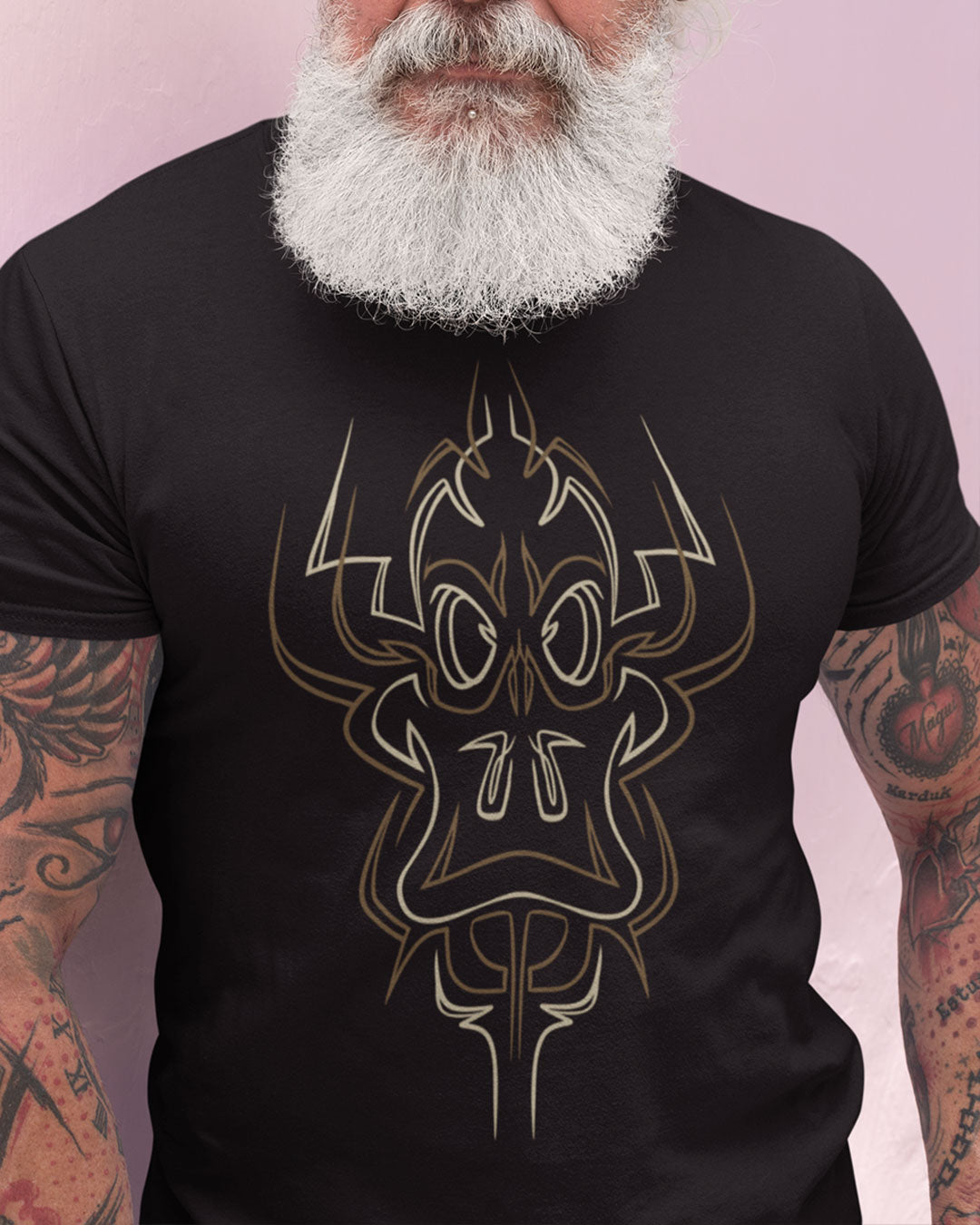
Pinstriping: The Art of Fine Lines
Share
I’ve been experimenting with pinstriping in my tee print designs, and it’s given me a new appreciation for the craft. There’s something meditative about the precision, the flow of lines, and how a simple stroke can transform a design into something unique. It’s a way to bring personality and tradition into modern artwork.
When it comes to my own motorcycle, the idea of pinstriping feels deeply personal. It’s not just decoration; it’s storytelling—a way to express identity and connection to the riding culture. If I ever landed on the perfect concept, I wouldn’t hesitate to turn to a master like Platu or Pekka Mannermaa. Their skill goes beyond technical execution; they breathe life into the designs, making each line purposeful and powerful.
There’s a reverence in trusting a pro with something so meaningful. It’s not just about getting the job done but letting an expert translate your vision with their artistry. Pinstriping isn’t just lines on metal—it’s a legacy, a piece of culture passed down through generations, and something that becomes a permanent part of your journey on two wheels.
Pinstriping: The Art of Fine Lines
Pinstriping is the intricate art of applying fine, decorative lines to a surface, often used to enhance the visual appeal of vehicles, furniture, or other objects. The tradition dates back to horse-drawn carriages but gained popularity in the 20th century with custom automobiles and motorcycles.
Pinstriping on Motorcycles
On motorcycles, pinstriping serves as both art and expression. Typically hand-painted, these designs can range from subtle, clean accents to elaborate, flowing patterns. The goal is to highlight the bike’s curves and features while adding a unique, personal touch.
Why Pinstriping?
- Customization: Each bike becomes a one-of-a-kind masterpiece.
- Tradition: It connects riders to the heritage of custom motorcycle culture.
- Aesthetics: Adds elegance, depth, or boldness to the bike’s design.
Techniques Used
- Freehand Pinstriping: Done with special brushes, requiring steady hands and skilled craftsmanship.
- Tape Masking: Used for symmetry, where a stencil or guide ensures consistent designs.
- Color Choices: Bold contrasts (black on chrome, gold on matte black) or harmonizing tones enhance the bike's personality.
Common Designs
- Flames: Represent speed and intensity.
- Scrolls and Flourishes: Classic and timeless.
- Symmetry and Flow: Lines that complement the natural contours of the motorcycle.

